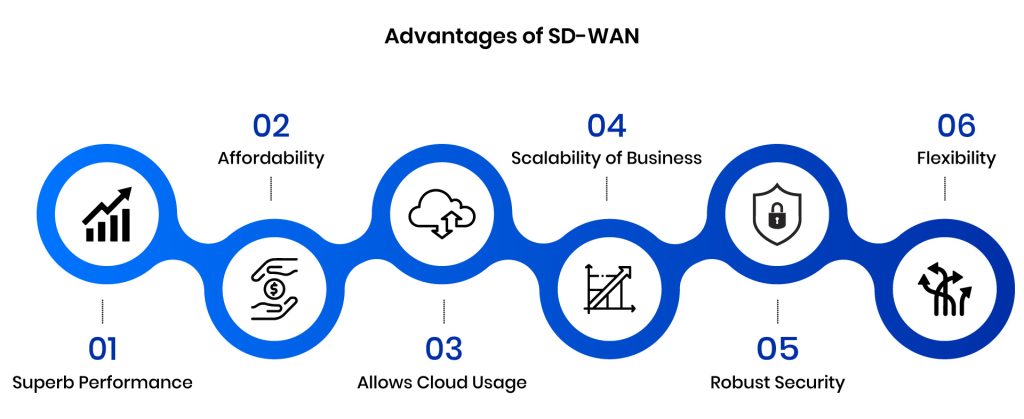

ACL Digital
How To Serve Your Organization’s SD-WAN
In the growing era of digitalization, organizations are switching to remote offices, hybrid works, and cloud operations. Businesses are thriving for a greater network revolution that provides security, simplicity, and flexibility in one place by combining Wide Area networks (WAN), Local Area networks (LAN), and Multi-Cloud technologies.
Business owners are recasting their businesses digitally at a very rapid pace. They have to understand how important it is to take their businesses digitally for an optimized and efficient network transformation. And SD-WAN is one of the emerging technologies that allow business owners and individuals to access their data from remote locations virtually with excellent speed, bandwidth, and security.
What is SD-WAN?
Software-Defined Wide Area Network (SD-WAN) is the latest type of network architecture that simplifies the operation of WAN. SD-WAN using software creates virtual networks that enable businesses to connect their different branches and share data with the help of high-speed internet connection.
They can connect with any device at any location through the internet without installing any expensive types of equipment at their branch locations. It connects multiple branches of an organization at the center of the enterprise and creates a centralized management system to manage the flow of data via low-cost maintenance. SD-WAN is categorized into two parts per the deploy type, one is overlay SD-WAN and in-net SD-WAN.
In the overlay, a layer of infrastructure is created by replacing the whole network stack of the enterprise with a branch WAN connection or behind routers. However, it creates some challenges in controlling the network and visibility because it demands another management layer. In In-net SD-WAN, a branch’s network will be connected to the nearest Point of Presence (PoP), and the provider’s infrastructure controls the flow of data.
Why is SD-WAN Different from MPLS?
Multiprotocol Label Switching (MPLS) is a traditional network architecture that helps control the data flow from an organization to its headquarters. Before the invention of SD-WAN, businesses had been extensively using MPLS. However, if an enterprise wants to access its remote office, it must install MPLS circuits at those offices and the corporate data center.
It is a lengthy and complex process. However, as organizations are heading towards cloud-based operations, a fast, software-based, cost-effective solution is required to monitor its different branches easily. Besides, MPLS is a slow process. Businesses need to wait for 3-4 weeks to avail of the service, whereas with the help of SD-WAN, a new branch can be running within 24 hours. The flow of data from different offices is fast and can be analyzed at the data center on a real-time basis, irrespective of old traditional methods.
Advantages of SD-WAN

You can gain multiple benefits by switching to SD-WAN from MPLS. The best thing is that you can connect to different locations with just one network. So you do not have to change the network every time you change location. The major benefits are mentioned below:
Superb Performance
Different combinations of technologies are used in SD-WAN for excellent speed and reliability for robust network transformation. Using VPN (Virtual Private Network), SDN (Software Defined Networking) and NFV (Network Functions Virtualization) allows users to access the same resources among all users.
Affordability
Using Cloud-based applications and different networks to access can be costly. To mitigate this issue, SD-WAN comes into play. You can use your low-cost local internet, direct access to Cloud-based services, and reduce traffic load as you will be connected via WAN. Hence, you can save a lot of money as well.
Allows Cloud Usage
If you are on Cloud services or willing to shift, SD-WAN is what you need. Get direct cloud access at remote branches eliminating issues like backhauling traffic – routing all branches and cloud traffic through the data center. SD-WAN allows business branches to access the internet directly.
Scalability of Business
You can scale up or down your network bandwidth as per your needs. If your employees work remotely, you can increase the bandwidth by just adding PoPs. You do the opposite in case you need to reduce costs.
Robust Security
Provides security features like intrusion prevention, encryption, firewalls, DNS filtering, NGFW, etc. That means that you can focus only on what matters the most in your business.
Flexibility
This allows you to manage your network remotely and securely without any hassle. Or in the future, if you are looking to enhance your network, you can add more bandwidth as well.
SD-WAN fundamentally changes the network architecture of an enterprise to be affordable, better, secure, and fast. It’s an essential component of Network Transformation occurring across businesses and industries as part of the large pact; Digital Transformation. Firms with the incorporation of SD-WAN can monitor & share data, do cloud operations troubleshooting, and boost the performance at every branch in a time-saving and cost-effective manner.
24/7 SD-WAN helps organizations to save their productive time on network troubleshooting issues. Considering different aspects like low-cost installation, efficiency, delivery quality, user experience, etc., few business owners are still reluctant in deploying SD-WAN into their system, which could bring potential losses to these businesses later in the future.




